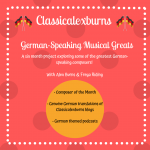Ruth Schönthal: String Quartet No.3 ‘In Memorium Holocaust’
Context
Composed in 1997, Ruth Schönthal’s String Quartet No.3 is subtitled ‘In Memroiam Holocaust’. For many years Schönthal had avoided this topic in her music as she didn’t want to trivialise the Holocaust. In a 1999 interview she claimed that other composers had exploited the Holocaust as way further their personal careers: “They make decorative material out of it – cheap stuff.”
Schönthal wanted to use this theme because she knew that art was a powerful vehicle for remembrance:
“The challenge here is that when you want to convert something into art with an agenda like that, ultimately it still must be art – it still must be a work on its own.”
Schönthal uses the quartet to represent four different personal experiences and reactions, with an emphasis on nothing and nothingness. This was because one of the defining features of the massacre of the Jews during World War II was that they died for no purpose or accomplishment. The horrors of what happened were to no real advantage to the Nazis, which is why nothingness speaks the loudest in Schönthal’s string quartet.
The Music
Set into two defining movements, In Memorium Holocaust, sees each player of the quartet take on the tole of an individual victim of the German massacre.
I. Movement I: Grave
Opening with a slow and dissonant introduction, with all parts playing together as a unit, the parts start to break away from one another. As they become independent from one another, their individual rhythms create collective atmospheres. Described as ‘collective anguish’, the swirls and shrieks paint an intense picture.
Schönthal utilizes the top ranges for all the instruments, which creates the shrieking sounds. The cello in particular doesn’t even sound like a cello for a lot of this movement as it plays right by the bridge throughout. The layering of the melodies adds to the intensity of the work as the music becomes more abrasive. A series of edgy chords adds to the idea of nothingness in this work. The induced panic and distress at the end of this movement rings throughout the quartet, seeing the quartet run through the highs and lows of their registers.
II. Movement II: Lament and Prayer
Opening with a passionate and rhapsodic solo from the cello, the introduction is haunting. Schönthal’s use of dissonance is much more controlled in this movement, however this is a sense of broken harmony throughout. After over two minutes of the opening cello soliloquy, the rest of the quartet join in with a recurring three-note swirl.
The slow tempo of this movement makes the augmented accompaniments rumble underneath. The dramatic dynamics also adds to the intensity as the loud bursts create light and shade with the quiet and unsuspecting sections.
The movement concludes with an air of prayer. Schönthal intended for it to be a prayer that adds no solace to the music whatsoever: “The listener is meant to briefly relive these moments. That is the function of this musical memorial.”
Final Thoughts
Ruth Schönthal’s String Quartet No.3 is a true reflection of the thoughts and feelings of someone who experienced such a horrific time. Her use of dissonance and underlying intensity makes this particular quartet really effective in its message. Perhaps one of his most-known works today, In Memoriam Holocaust has played a part in making sure that the Holocaust remains in perpetual memory.
Ⓒ Alex Burns
Happy Reading!
You might also enjoy… Dmitri Shostakovich: String Quartet No.8
*This blog is part of the German Speaking Musical Greats Project 2019/20

Recommended Recordings:


0 Comments